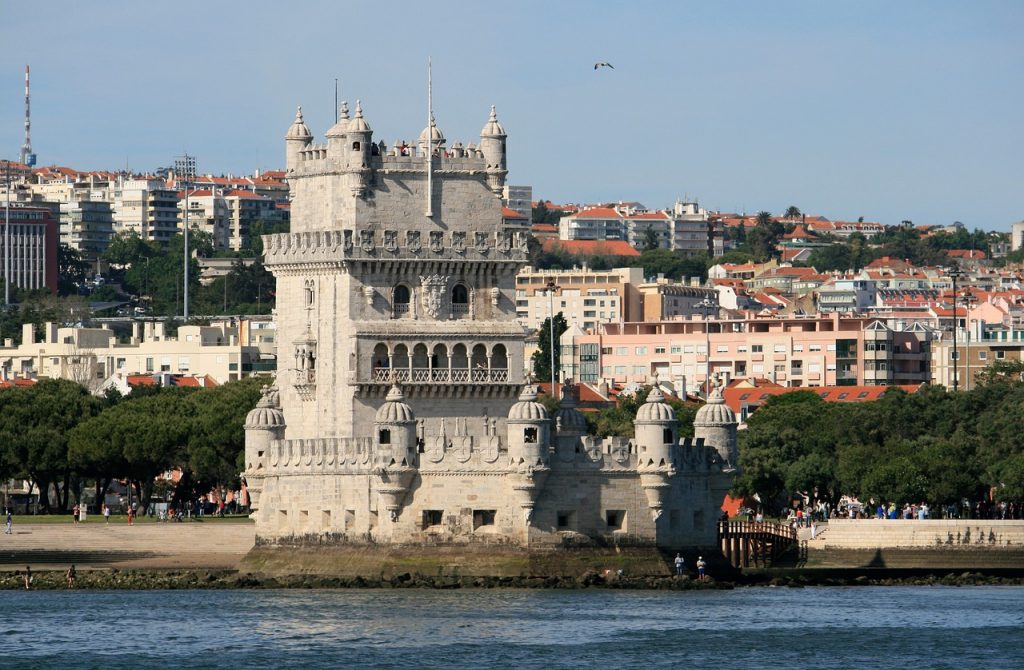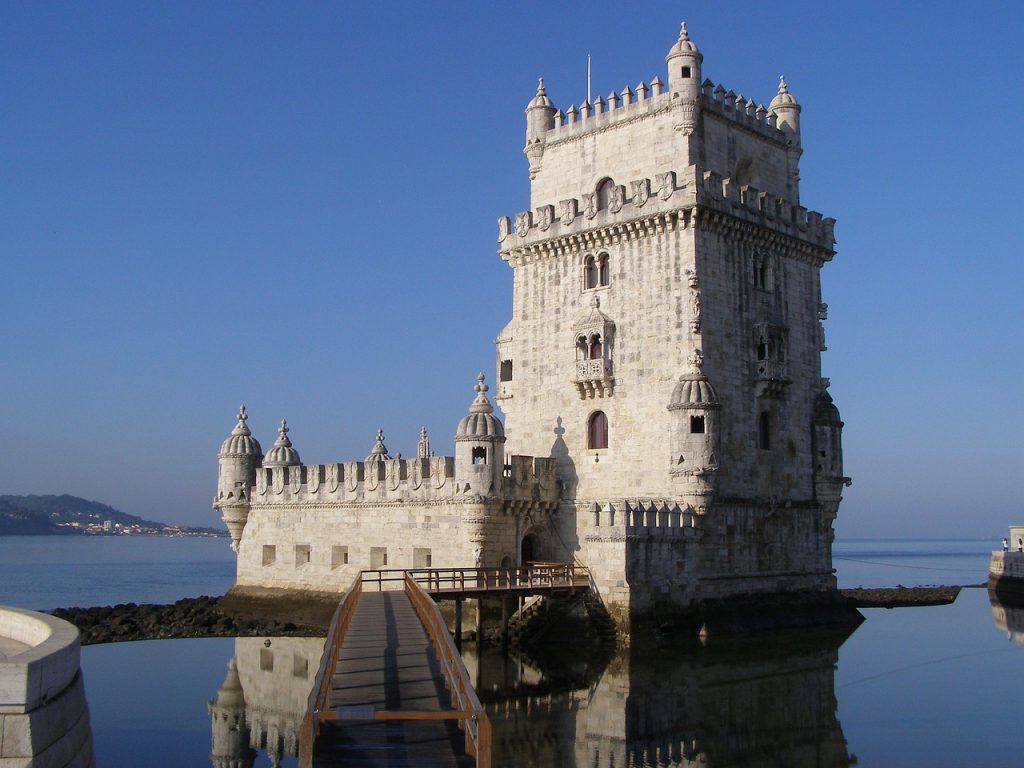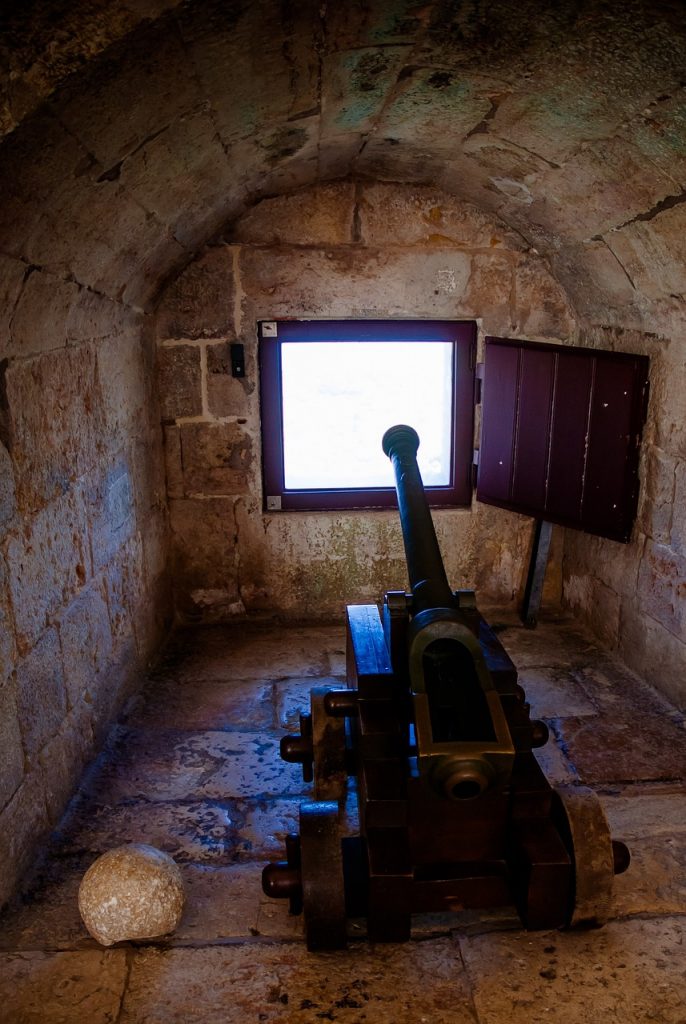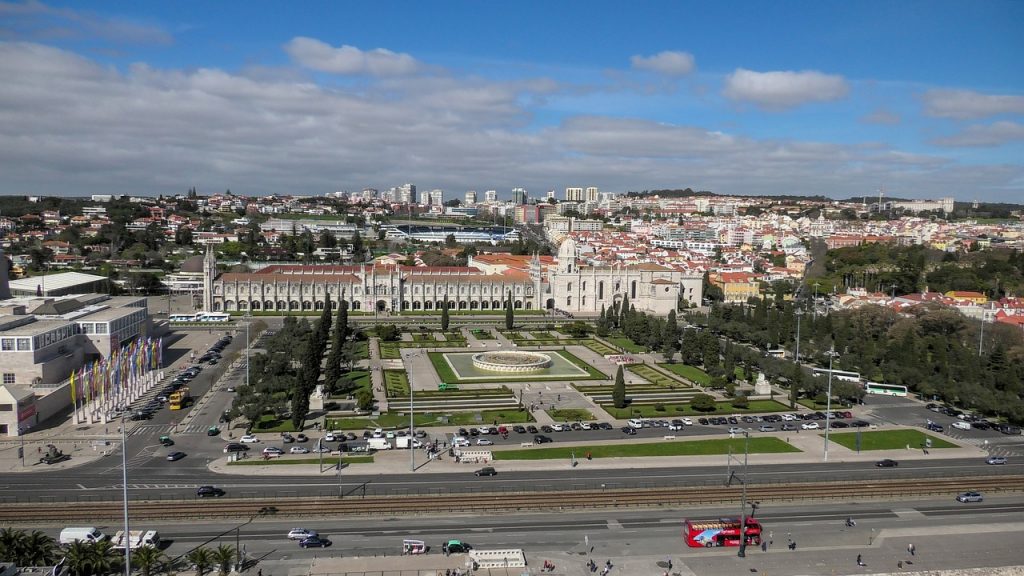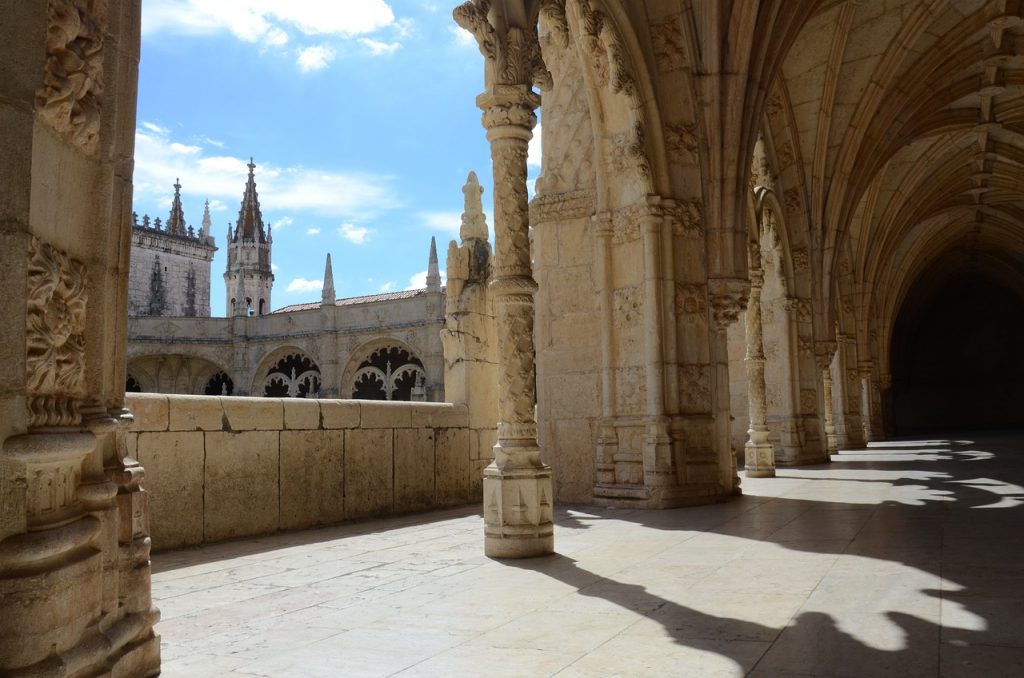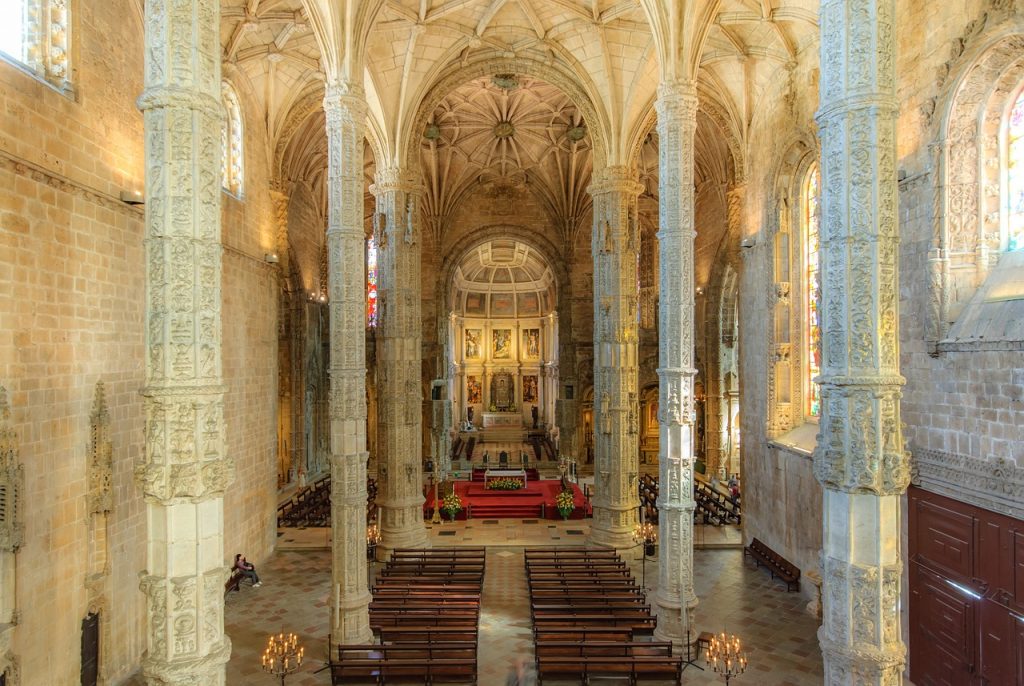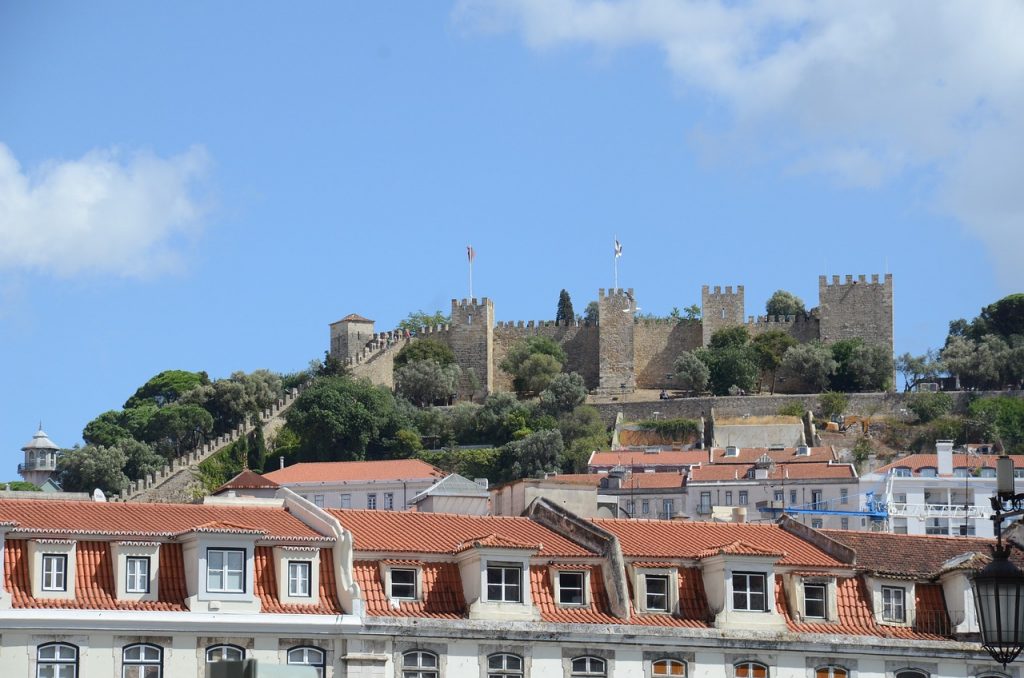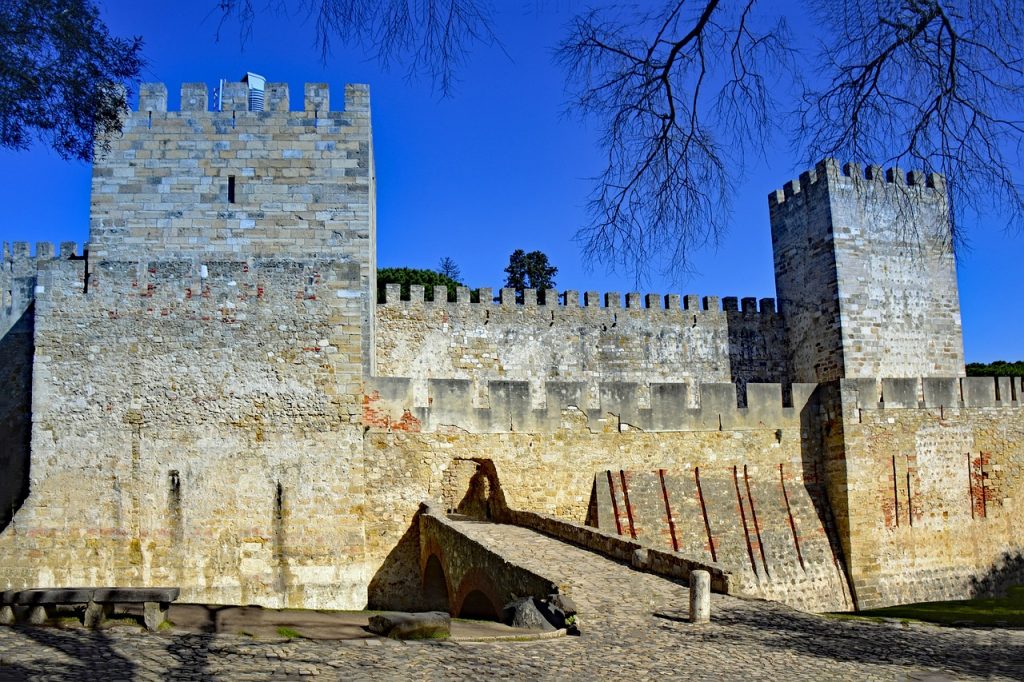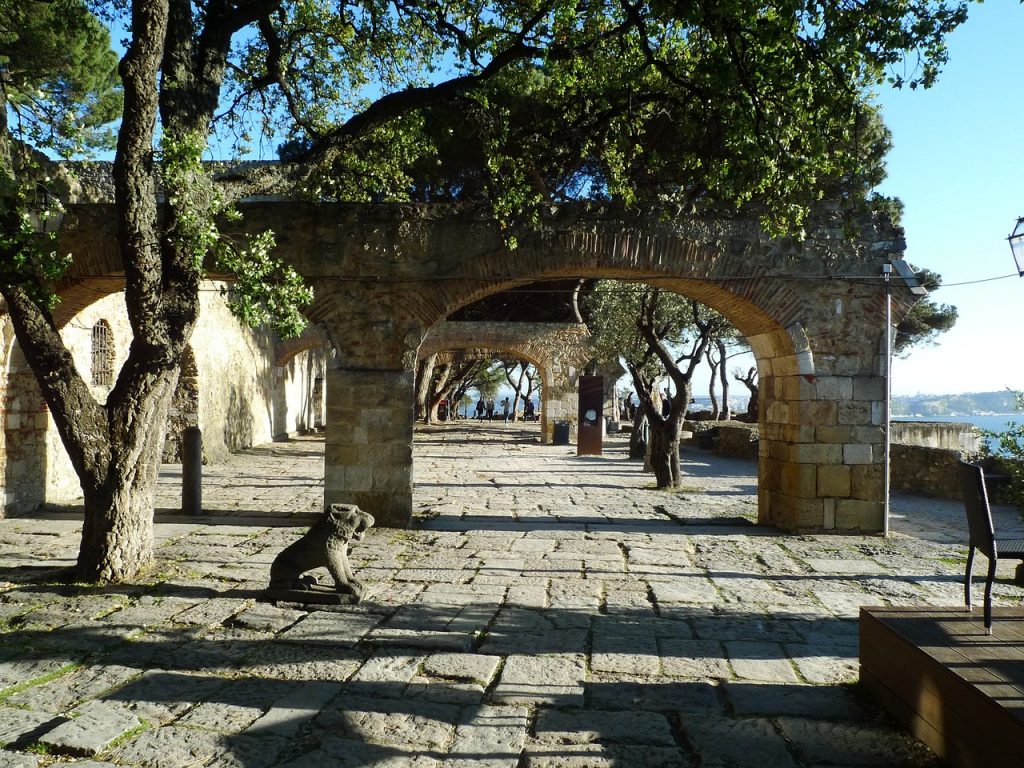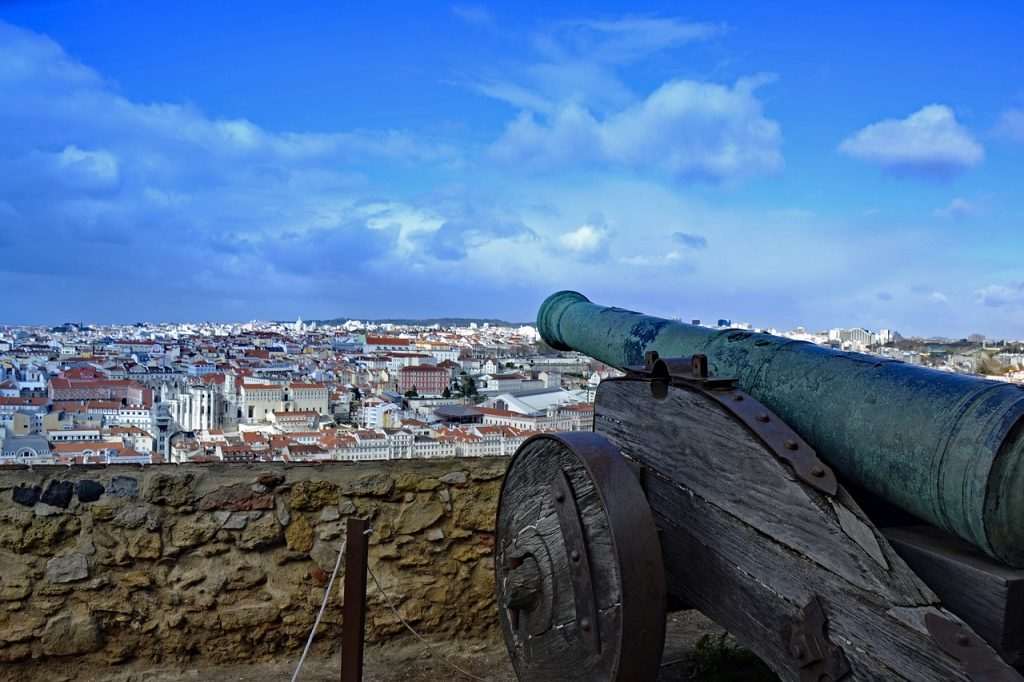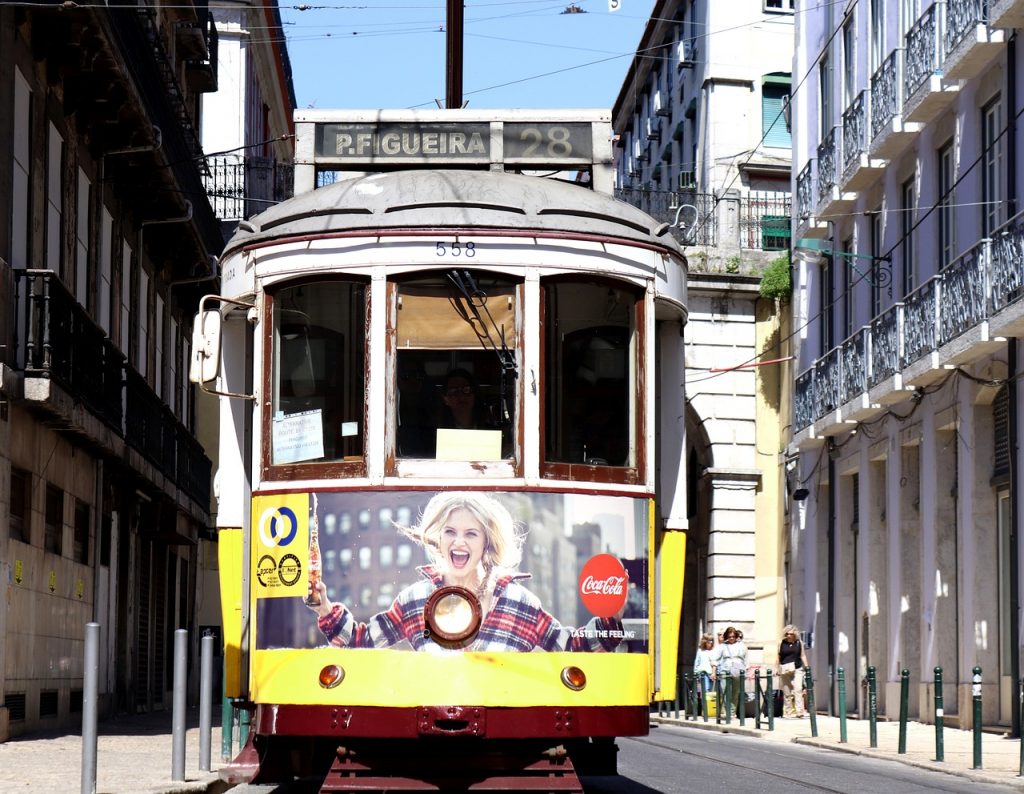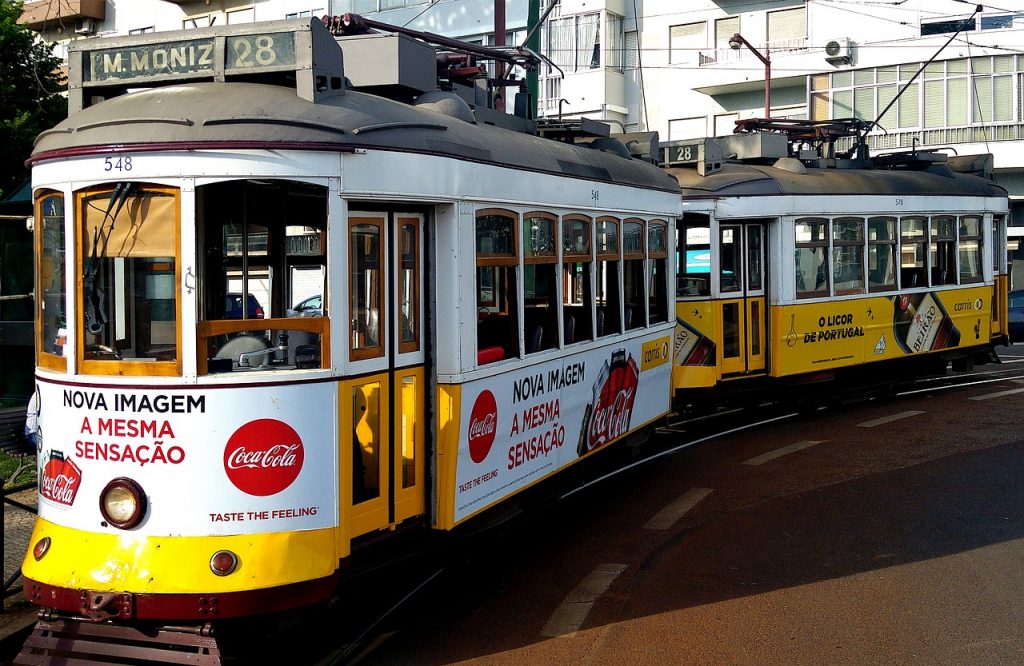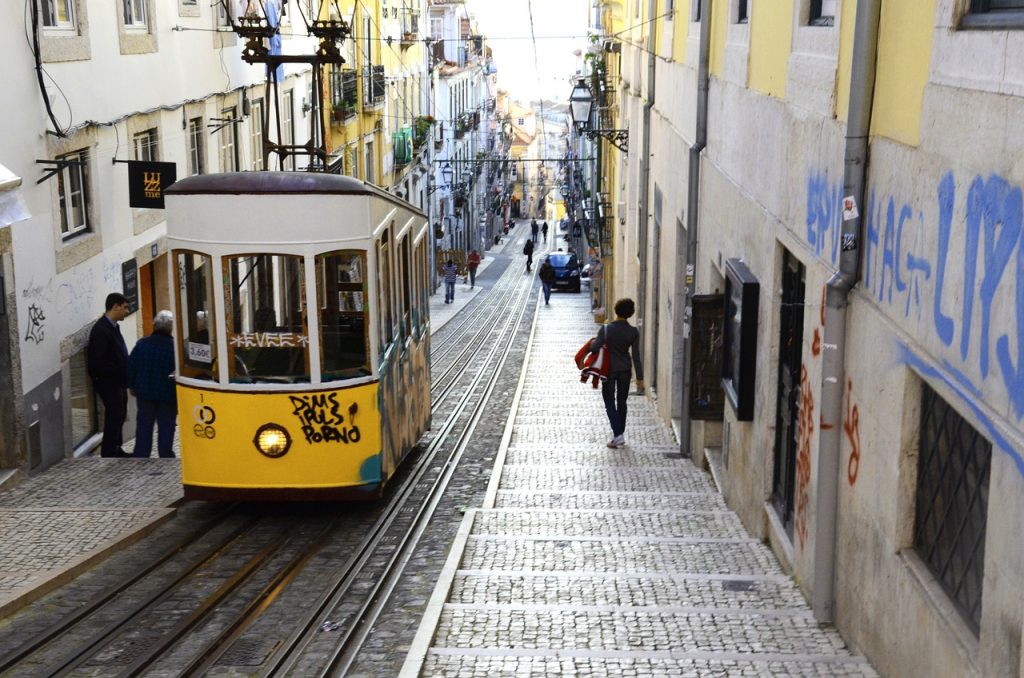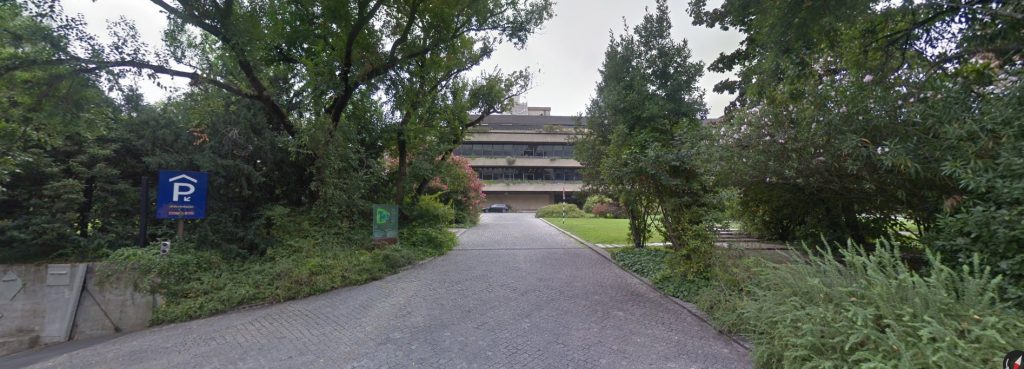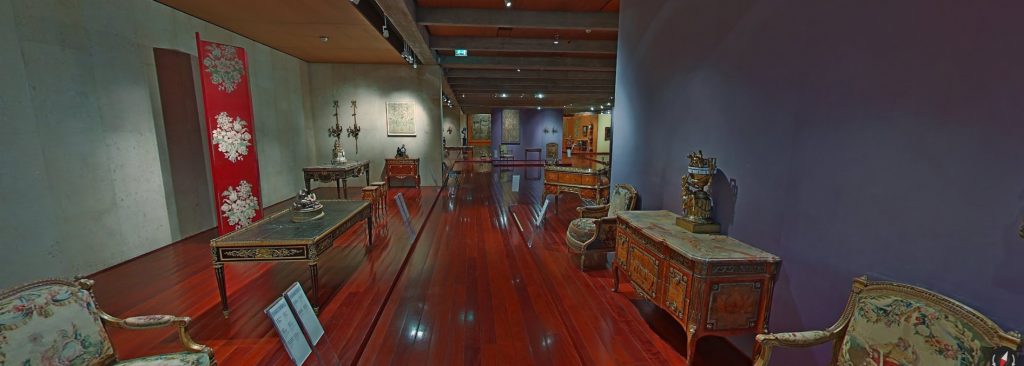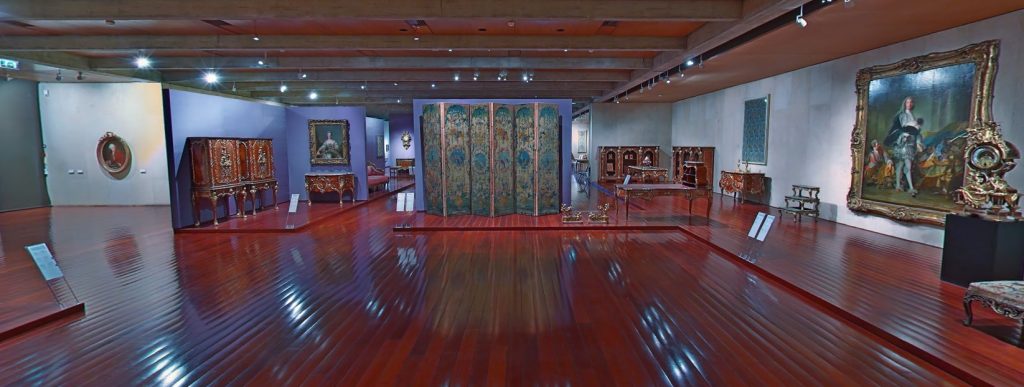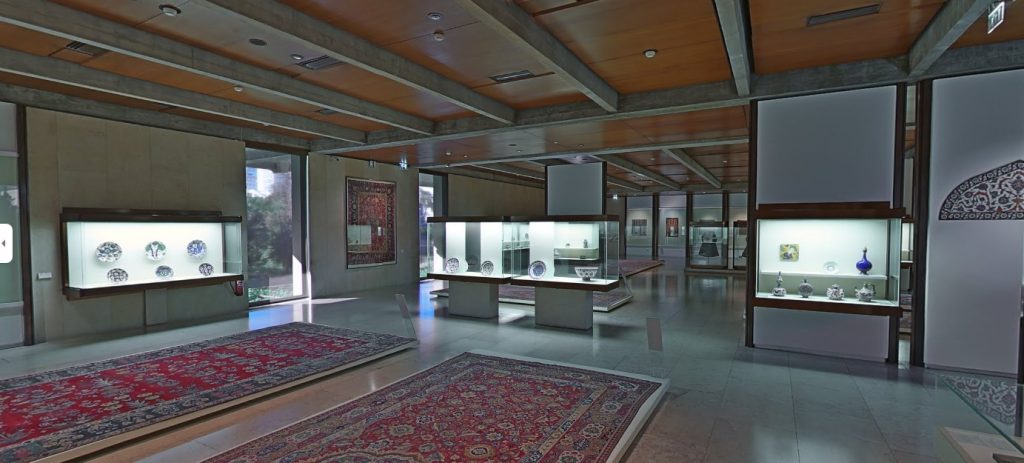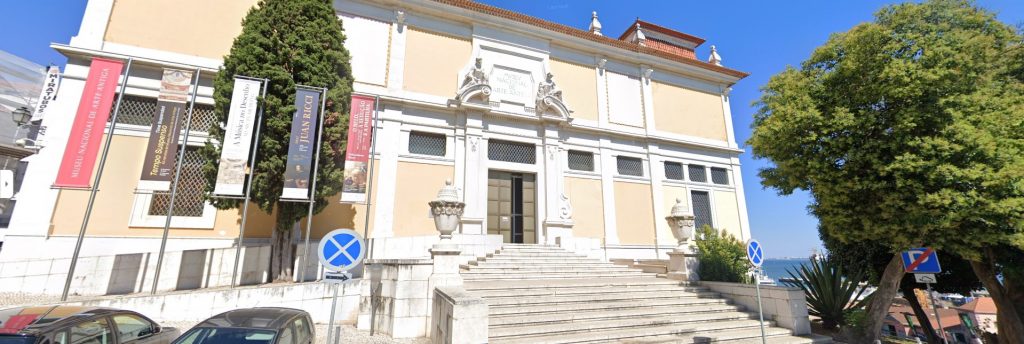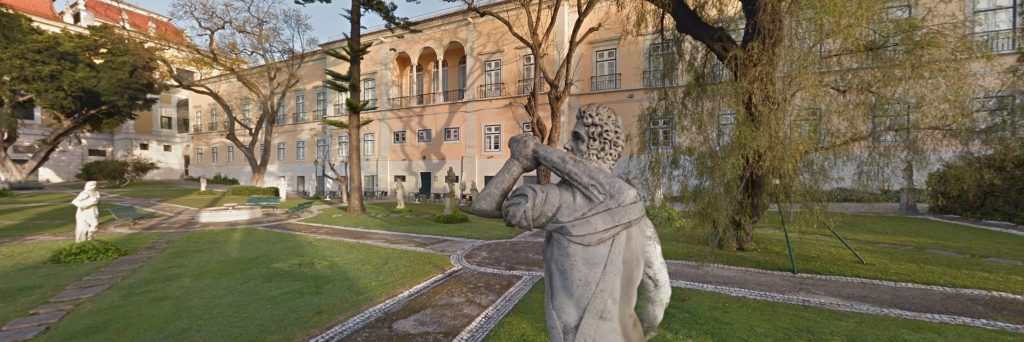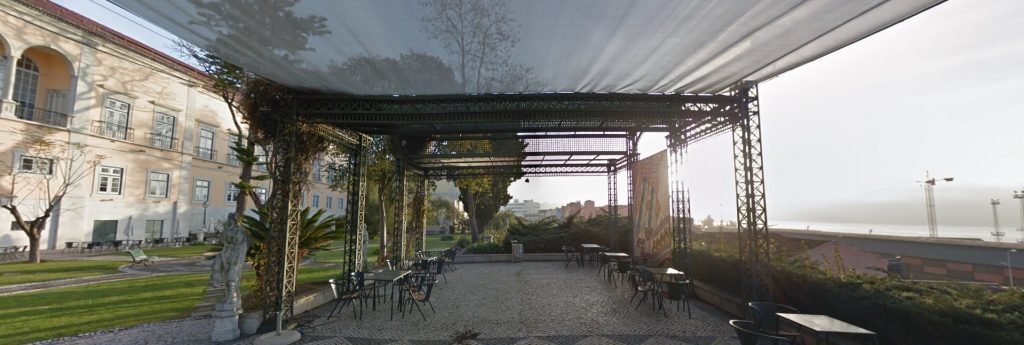There are many things to do in Portugal, Lisbon, so if you’re thinking of adventuring there, you should!
Portugal’s beautiful capital city boasts a number of popular attractions and activities. Some will excite you, some will make you feel like a local, but undoubtably they will all make you feel great.
If you’re an avid traveler and keen on exploring, we advise you rent a car in Portugal so you’ll be able to see much more! As in every travel adventure, time is everything – it makes it or breaks it!
Explore the Historic Neighborhoods of Lisbon
Lisbon is known for its charming and historic neighborhoods such as Alfama, Bairro Alto, and Baixa. Each neighborhood has its own unique character, architecture, and dazzling atmosphere. It would be a shame if this wasn’t on your top things to do in Portugal Lisbon.
Alfama is one of the oldest neighborhoods in Lisbon. The winding alleys, steep staircases, and traditional fado music, they all make you feel like you’ve stepped in another era. It’s a magnificent place to stroll on a sunny afternoon. Overlooking the Tagus Riverand, Alfama is also home to many historic landmarks, including the Castle of Sao Jorge, Lisbon Cathedral, and the National Pantheon.
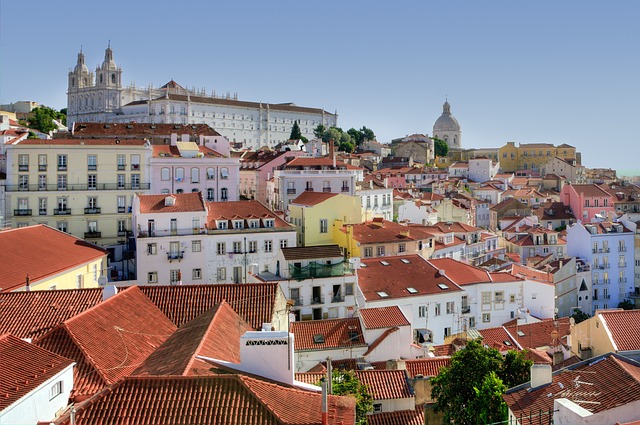
Bairro Alto is another part of L:isbon that is famous for its vibrant nightlife, with many bars, restaurants, and music venues. During the day, the neighborhood is a great place to explore, with narrow streets, colorful buildings, and many boutique shops and cafes. Walking through the streets, you will feel just like you’re starring in a movie!

Baixa is the downtown area of Lisbon and it is known for its wide streets, grand squares, and elegant architecture. The neighborhood was rebuilt after the devastating earthquake of 1755 and features many historic landmarks, including the Rossio Square, the Santa Justa Lift, and the Praça do Comércio. If you love shopping, then you’ll be pleased to know that you’ll find many shops, restaurants, and cafes. This makes it a great place to explore during the day or evening.

All of these neighborhoods offer a unique glimpse into the history and culture of Lisbon, with their distinctive architecture, lively atmosphere, and rich traditions. You can spend hours exploring these streets and you won’t get enough of their vibrant atmosphere!
Visit the Landmarks
Lisbon is home to many historic landmarks, including the Belem Tower, Jeronimos Monastery, and Sao Jorge Castle.
The Belem Tower is a 16th-century fortified tower that sits on the Tagus River. It was built to defend Lisbon’s harbor and is now a UNESCO World Heritage Site. The tower is open to visitors every day except for Mondays, from 10 am to 5 pm (last admission is at 4:30 pm). The entrance fee is €6 for adults, and children under 12 are free.
The Jeronimos Monastery is a 15th-century monastery that was built in the Manueline style. It is also a UNESCO World Heritage Site and is famous for its intricate stone carvings and beautiful cloisters. The monastery is open every day except for Mondays, from 10 am to 5 pm (last admission is at 4:30 pm). The entrance fee is €12 for adults, and children under 12 are free.
Sao Jorge Castle is a medieval castle that sits on a hill overlooking Lisbon. It was built in the 11th century and has served as a royal residence and military fortress throughout its history. The castle is open every day, from 9 am to 9 pm (last admission is at 8 pm). The entrance fee is €10 for adults, and children under 10 are free.
It’s worth noting that if you aren’t renting a car, you can purchase a Lisboa Card, which provides free admission to many of Lisbon’s top attractions, including the Belem Tower and Jeronimos Monastery. The card also includes free public transportation and discounts at many restaurants and shops. Prices for the Lisboa Card start at €20 for a 24-hour pass.
Take a ride on Tram 28
One of the top things to do in Portugal, Lisbon is taking this train ride! Why? Because this historic tram line takes you through the narrow streets of Lisbon and provides excellent views of the city.
Taking a ride on Tram 28 is a popular tourist activity in Lisbon. The tram winds its way through the narrow streets of some of the city’s oldest neighborhoods, including Alfama and Bairro Alto. It also passes by Castle of Sao Jorge, the Miradouro da Graça viewpoint, and the Basilica da Estrela. Along the way, You will get to admire the colorful buildings, historic architecture, and stunning views of the city!
What are the costs? A single ride on Tram 28 costs €3.00 when purchased on board the tram. However, it’s worth noting that the tram can be very crowded, especially during peak tourist season, and pickpocketing is a common problem. If you already have a Lisboa Card, then this ride will be free of charge.
Enjoy the Local Cuisine
Lisbon is highly famous for its seafood, pastries, and wine. If you’re traveling there, grabbing a bite of at least one of their local meals is a must! One of the most popular things to do in Portugal Lisbon is delight your tastebuds with amazing flavors. And you have plenty to choose from.
Pastel de Nata is perhaps the most iconic of all Portuguese pastries. It’s a custard tart that is typically served warm and dusted with cinnamon and powdered sugar. The most famous place to try them is at Pastéis de Belém in the Belem neighborhood.

Codfish is the most beloved ingredient in Portugal, and bacalhau is a classic dish made with salted cod that has been soaked, then baked or fried with garlic, onions, and olive oil. There are over 365 ways to prepare it, so you can have it in a different way every day of the year!

Sardines are a staple of the Portuguese diet, and they are best enjoyed grilled with a bit of sea salt and lemon. They are typically served with boiled potatoes and a simple salad. The sardine season is from June to September, so if you’re traveling then, you must try them!
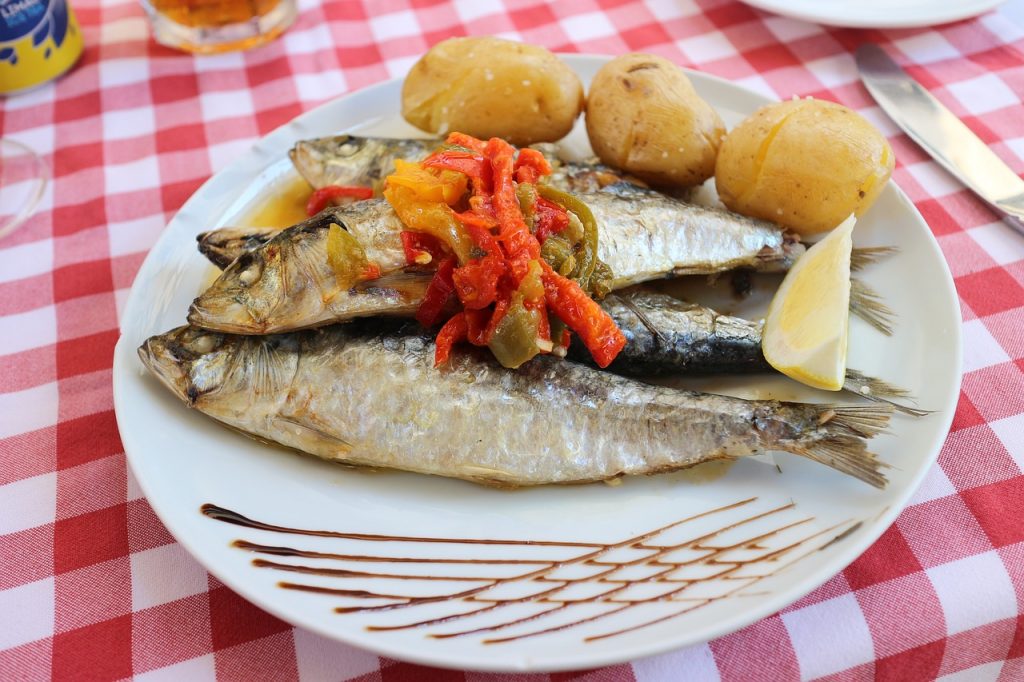
Arroz de Marisco is a seafood rice dish that is a specialty of Lisbon. It typically contains a variety of shellfish, such as prawns, clams, and mussels, as well as vegetables and rice.

If you fancy a refreshing white wine that is produced in the northern part of Portugal, then Vinho Verde is your best pick. It is often served as an accompaniment to seafood dishes. But, if you’re feeling more adventurous, then Ginja is a traditional cherry liqueur that is commonly served in Lisbon. It is often drunk as a shot, and is sometimes served in small chocolate cups.

Visit the Museums
Lisbon has several world-class museums, including the Calouste Gulbenkian Museum, the National Museum of Ancient Art, and the Museum of Art, Architecture, and Technology.
The Calouste Gulbenkian Museum is one of the most important art museums in Lisbon, and it’s located in the city’s central district of Campo Pequeno. If you love art and culture, then this museum is the place to go to. With its extensive collection of art and artifacts from around the world, it offers a fascinating glimpse into different cultures and time periods, and is sure to leave a lasting impression on visitors.
The museum features a wide variety of art from different time periods and regions, including Egyptian, Greco-Roman, Islamic, Asian, and European art. The collection includes paintings, sculptures, ceramics, and textiles, among other types of artwork. The museum also has a large collection of works by Portuguese artists.
If you’re wondering when you can visit, you should know it’s open every day except for Tuesdays, from 10am to 6pm. It’s worth noting that the museum can be very busy on weekends and holidays, so you may want to consider visiting during the week if possible.
The entrance fee for the museum is €10 for adults, with reduced fees available for children, students, and seniors. Admission is free for visitors under the age of 12. You might hear that the museum offers free admission on Sundays until 2 p.m. – but that is only for locals, unfortunately.
Another museum that shouldn’t be missing from your top things to do in Portugal Lisbon is the National Museum of Ancient Art in Lisbon . Also known as Museu Nacional de Arte Antiga in Portuguese, it is one of the most important art museums in Portugal.
The National Museum of Ancient Art was founded in 1884 as a way to promote and showcase Portugal’s rich cultural heritage. The museum was housed in the Palácio de São Francisco until 1904, when it moved to its current location in the former palace of the Counts of Alvor. Over the years, the museum has undergone numerous renovations and expansions, and today it is considered one of the most important cultural institutions in Portugal.
This museum features a vast collection of Portuguese and European art from the 12th to the 19th century, including paintings, sculptures, decorative arts, and textiles. It also has a significant collection of Asian art, including Chinese porcelain, Japanese screens, and Indian textiles.
The general admission fee for the museum is €6, with reduced fees available for children, students, and seniors. It’s also open everyday except for Mondays, from 10am to 6pm.
MAAT or The Museum of Art, Architecture, and Technology is a contemporary art museum located in the neighborhood of Belém. The museum opened in October 2016 as a new cultural center for Lisbon. It was designed by the renowned architect Amanda Levete, and its striking building is a mix of new and old structures that overlook the Tagus River.
The museum features a range of contemporary art exhibitions, performances, and events. It also has a permanent collection of works that explore the intersection of art, technology, and architecture. You’ll also be able to explore the museum’s beautiful grounds, which include a rooftop terrace with stunning views of the river!
The admission fee for the museum is €9, with reduced fees available for children, students, and seniors. Admission is free for visitors under the age of 18, and it’s open every day except for Tuesdays, from 12pm to 7pm.
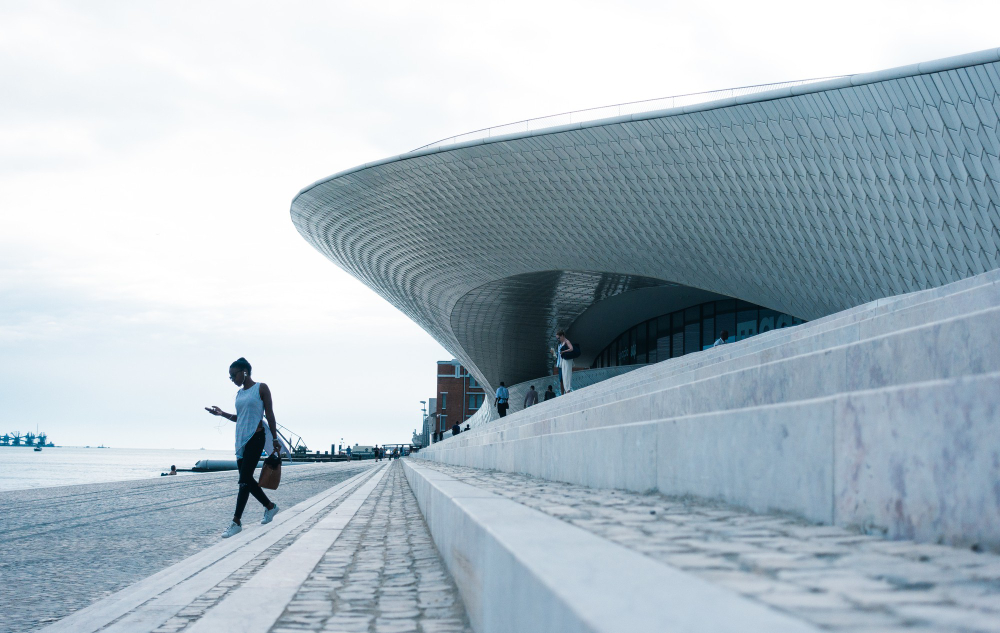
Enjoy the nightlife
Lisbon has a vibrant nightlife scene, with many bars, clubs, and music venues.
If you want to experience the nightlife in this magnificent city, then try the Bairro Alto neighborhood, as this is a popular spot. This historic neighborhood is one of the liveliest areas in Lisbon at night. With its narrow streets and countless bars and clubs, it’s the perfect place to experience the city’s nightlife. Many of the bars and clubs in Bairro Alto offer live music, DJs, and a laid-back atmosphere.
Cais do Sodré is near the waterfront, making it another popular nightlife destination in Lisbon. It’s home to a number of bars, clubs, and music venues, including the famous Pensão Amor, a former brothel turned nightclub.
Lisbon is famous for its melancholic music style called Fado, and many bars and restaurants around the city offer live Fado performances at night. Some of the best places to hear Fado include Clube de Fado and A Baiuca.
If you’re not the party all night kind of person, then there are other things to do in Portugal Lisbon that don’t require excessive loud music. Rooftop bars that offer great views of the city and a relaxed atmosphere have also made room in Lisbon. Some popular options include Park Bar, Sky Bar at Tivoli Lisboa, and Topo Chiado.
If the above don’t fancy you either, then Lisbon’s many viewpoints, known as Miradouros, are a great place to visit at night. They offer stunning views of the city and are especially beautiful when lit up at night. Miradouro de Santa Catarina and Miradouro de São Pedro de Alcântara are both popular spots that you might want to see.
From lively bars and clubs to cultural experiences like Fado music and scenic viewpoints, you are sure to find something to suit your tastes and have a memorable night out in this vibrant city!
Relax at the Beach
While Lisbon itself is not located directly on the coast, there are several beaches located within easy reach of the city. If you’re thinking of adding a stop at the beach in your top things to do in Portugal Lisbon, then you have some valid options below.
Cascais is seaside town located about 30 minutes from Lisbon is home to several beautiful beaches, including Praia da Conceição, Praia da Duquesa, and Praia da Rainha.
A long stretch of coastline known as Costa da Caparica is located south of Lisbon. It’s home to several beaches that you might enjoy, including Praia de São João, Praia do Castelo, and Praia da Mata.
Located in the Sintra-Cascais Natural Park, Costa da Caparica is a popular spot for surfers due to its strong winds and waves. This includes Praia Nova, Praia da Saude, Praia da Morena and many more. If you’re in for some adrenaline, then that’s the place to head off to!
Carcavelos: This beach located about 20 minutes from Lisbon is one of the largest and most popular in the area.
To get to these beaches, you can take public transportation or rent a car. Buses and trains run regularly from Lisbon to Cascais, Costa da Caparica, and other nearby beach towns.
You can enjoy a range of activities such as swimming, sunbathing, surfing, kiteboarding, and beach volleyball. Many of the beaches also have restaurants, cafes, and bars where you can grab a bite to eat or a refreshing drink. So, if you like the sea, then this is just another reason to go visit Lisbon! And you might want to consider Porto for a week, too! It’s lovely!
All in all, if you’re already thinking of the things to do in Portugal Lisbon, then you’re half way there! Don’t be afraid to venture in this amazing city, as it has something for every traveler.

